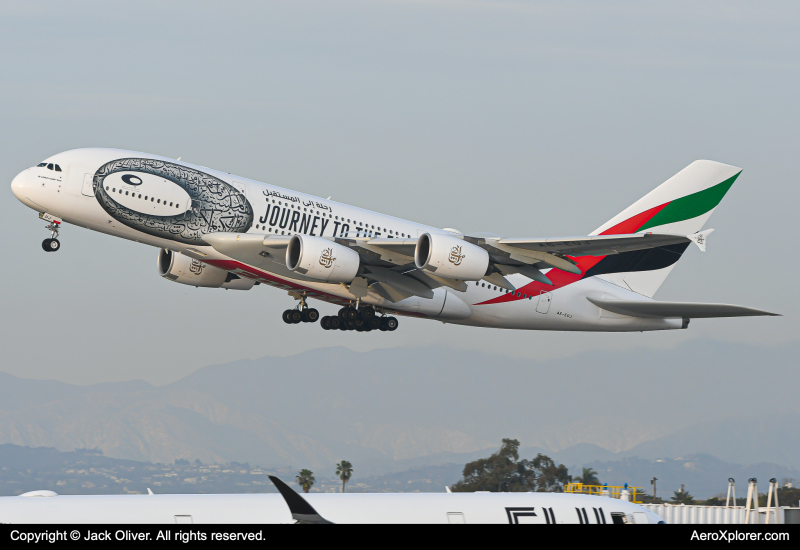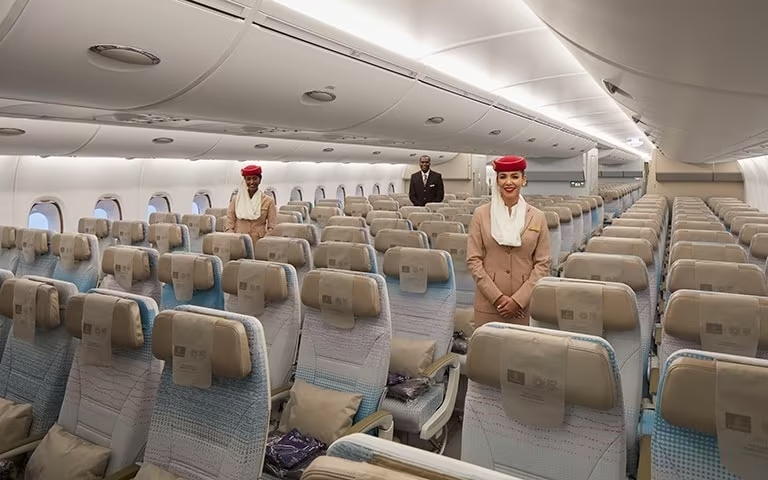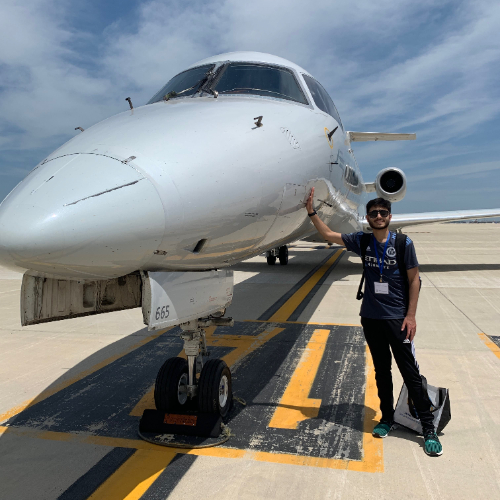The Airbus A380 has not been the financial success that Airbus hoped it would be. Many airlines have retired their A380s and others consistently consider doing so. However, Emirates is the clear exception in this case. The Dubai-based airline is the world's largest operator of the superjumbo and has expressed intentions of keeping its A380s for years to come. With that said, let's examine how Emirates makes the A380 work to its benefit.

Strategy Support
Of the 251 firm orders Airbus garnered for the A380, 123 (49%) came from Emirates. Why does Emirates love the Airbus A380 so much? According to CEO Sir Tim Clark, the A380 is the perfect solution to airport congestion.
In an interview with Business Insider, Clark stated, "Airport congestion around the world is getting worse...and up-gauging aircraft is the solution for this."
In other words, operating one big aircraft to an airport instead of two to three smaller ones reduces the issue of congestion. This is because you only have one large aircraft flying in and out which reduces the number of planes at the airport.
Operating one A380 to a specific city allows the carrier to increase passenger volume with fewer aircraft operations and flights.
Furthermore, Emirates' business model utilizes the "hub and spoke" model by which the airline uses one central hub to serve various destinations around the world. Emirates uses its Dubai hub to connect the East and the West. The Middle East is centrally located (hence the name) so much so that airlines from this region can fly nonstop to anywhere in the world.
This is provides for the perfect scenario for Emriates to use the A380. It's due to this that Emirates flies as far West as Los Angeles and as far East as Bangkok.
Emirates can funnel large numbers of passengers into Dubai from a Western city like San Francisco or New York, then have them connect onto an onward flight to Kuala Lumpur or Sydney. The carrier also has the advantage of being based in Dubai (or a disadvantage, given recent events).
In any case, Dubai being a massive tourist destination itself means that Emirates flights are packed with both those flying solely to Dubai and connecting through. London is by far the biggest Emirates A380 destination, with up to seven daily A380 flights to Heathrow Airport and another two serving Gatwick Airport.

The Future of Emirates' A380s
While many airlines have expressed concerns regarding the A380's long-term viability, Emirates has shown nothing but praise for the superjumbo, with the airline retaining 116 examples in active service. The oldest A380s will be phased out eventually (as five of them already have), however, Emirates intends to keep the A380 in its fleet until at least 2035.
67 aircraft are due to be retrofitted with the new Premium Economy cabin, showing that Emirates has no issue with investing large amounts of money into the plane. The A380 has proven to be a very profitable plane for Emirates. The glitz and glamour of the premium cabin showers, suites, and lounge areas make the Emirates A380 a coveted experience for all. Regardless of the class they are flying in.
The overall marketing benefits of the A380 make it an iconic aircraft for Emirates. The plane has become synonymous with Emirates and is a major part of the airline's current image. So if you've ever wanted to fly onboard an A380, Emirates is your best bet.
Comments (0)
Add Your Comment
SHARE
TAGS
INFORMATIONAL Emirates A380EmiratesEmirates A380 retirementA380 retirementAirbus A380 dubai dxbRECENTLY PUBLISHED
 Learjet Owned By Vince Neil Crashes Into Gulfstream Jet, 1 Fatality Confirmed
On February 10th, around 14:30 local time, a Learjet private jet aircraft crashed into another private jet after landing at Scottsdale Airport (SCF) in Arizona.
NEWS
READ MORE »
Learjet Owned By Vince Neil Crashes Into Gulfstream Jet, 1 Fatality Confirmed
On February 10th, around 14:30 local time, a Learjet private jet aircraft crashed into another private jet after landing at Scottsdale Airport (SCF) in Arizona.
NEWS
READ MORE »
 Seattle Plane Strike 2025: Japan Airlines and Delta Collision Raises Safety Concerns
Seattle-Tacoma International Airport saw a concerning incident on Wednesday morning when a Japan Airlines (JAL) plane clipped a parked Delta Air Lines jet while taxiing. Thankfully, no one was injured, but passengers described the collision as a frightening experience.
NEWS
READ MORE »
Seattle Plane Strike 2025: Japan Airlines and Delta Collision Raises Safety Concerns
Seattle-Tacoma International Airport saw a concerning incident on Wednesday morning when a Japan Airlines (JAL) plane clipped a parked Delta Air Lines jet while taxiing. Thankfully, no one was injured, but passengers described the collision as a frightening experience.
NEWS
READ MORE »
 Ethiopian Airlines Expands Cargo Fleet with New Boeing 777 Freighter
Ethiopian Airlines has expanded its cargo fleet with a brand-new Boeing 777 Freighter, registered as ET-BAB (MSN 68140). The aircraft was delivered directly from Boeing’s factory in Everett, Washington, USA, and landed at Addis Ababa Bole International Airport at 3:41 PM (GMT+3) on Wednesday, January 22, 2025.
NEWS
READ MORE »
Ethiopian Airlines Expands Cargo Fleet with New Boeing 777 Freighter
Ethiopian Airlines has expanded its cargo fleet with a brand-new Boeing 777 Freighter, registered as ET-BAB (MSN 68140). The aircraft was delivered directly from Boeing’s factory in Everett, Washington, USA, and landed at Addis Ababa Bole International Airport at 3:41 PM (GMT+3) on Wednesday, January 22, 2025.
NEWS
READ MORE »





